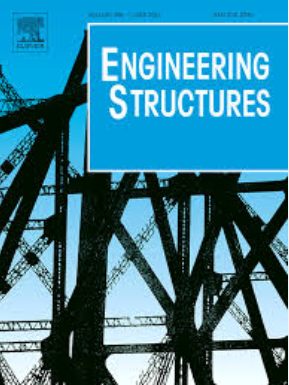Experimental and numerical assessment of recycled plastic fibers on shear strength and behavior of reinforced concrete beams with basalt FRP bars
IF 5.6
1区 工程技术
Q1 ENGINEERING, CIVIL
引用次数: 0
Abstract
In response to the growing demand for alternatives to traditional stirrups in construction, discrete fibers have emerged as a promising solution, offering potential time savings during the building process. Among these, the use of recycled plastic fibers has garnered significant attention, addressing both environmental sustainability and material efficiency challenges in the construction industry. This research focuses on incorporating recycled plastic as discrete fibers within concrete beams reinforced with basalt fiber-reinforced polymer (BFRP) bars, with the dual objectives of reducing environmental impact and enhancing construction efficiency. This research investigates the shear behavior and strength of concrete beams reinforced with BFRP bars through both experimental and numerical methods. Three types of discrete fibers (straps, water bottles, and ropes) were examined for their influence on beam performance. The study focuses on two key parameters: the aspect ratio of the fibers and the different materials from which they are made. Seven concrete beams were tested experimentally to assess these effects, and the experimental findings were further validated using finite element analysis FEM by using ABAQUS. The experimental results indicated that recycled plastic fibers did not significantly enhance the shear strength of FRC beams, with the exception of the BFRP-reinforced beam containing 20 mm short water bottle fibers, which showed a 13.97 % improvement in shear strength compared to the control beam. Furthermore, the analytical results aligned well with the experimental findings in terms of failure load, cracking behavior, and deformation behavior, demonstrating strong consistency between the two approaches.
求助全文
约1分钟内获得全文
求助全文
来源期刊

Engineering Structures
工程技术-工程:土木
CiteScore
10.20
自引率
14.50%
发文量
1385
审稿时长
67 days
期刊介绍:
Engineering Structures provides a forum for a broad blend of scientific and technical papers to reflect the evolving needs of the structural engineering and structural mechanics communities. Particularly welcome are contributions dealing with applications of structural engineering and mechanics principles in all areas of technology. The journal aspires to a broad and integrated coverage of the effects of dynamic loadings and of the modelling techniques whereby the structural response to these loadings may be computed.
The scope of Engineering Structures encompasses, but is not restricted to, the following areas: infrastructure engineering; earthquake engineering; structure-fluid-soil interaction; wind engineering; fire engineering; blast engineering; structural reliability/stability; life assessment/integrity; structural health monitoring; multi-hazard engineering; structural dynamics; optimization; expert systems; experimental modelling; performance-based design; multiscale analysis; value engineering.
Topics of interest include: tall buildings; innovative structures; environmentally responsive structures; bridges; stadiums; commercial and public buildings; transmission towers; television and telecommunication masts; foldable structures; cooling towers; plates and shells; suspension structures; protective structures; smart structures; nuclear reactors; dams; pressure vessels; pipelines; tunnels.
Engineering Structures also publishes review articles, short communications and discussions, book reviews, and a diary on international events related to any aspect of structural engineering.
 求助内容:
求助内容: 应助结果提醒方式:
应助结果提醒方式:


